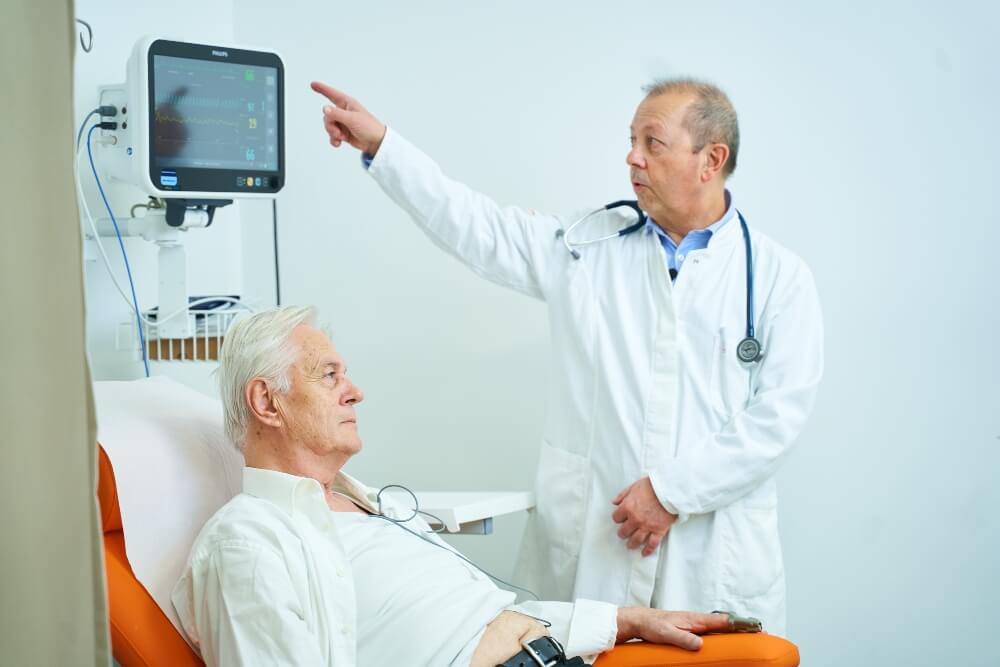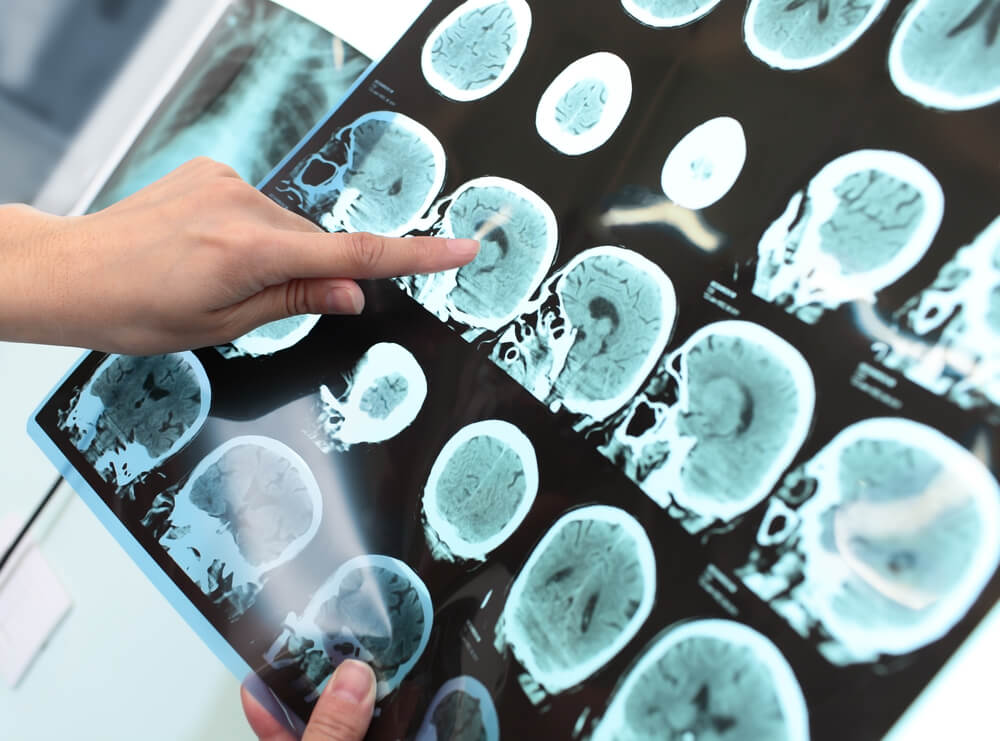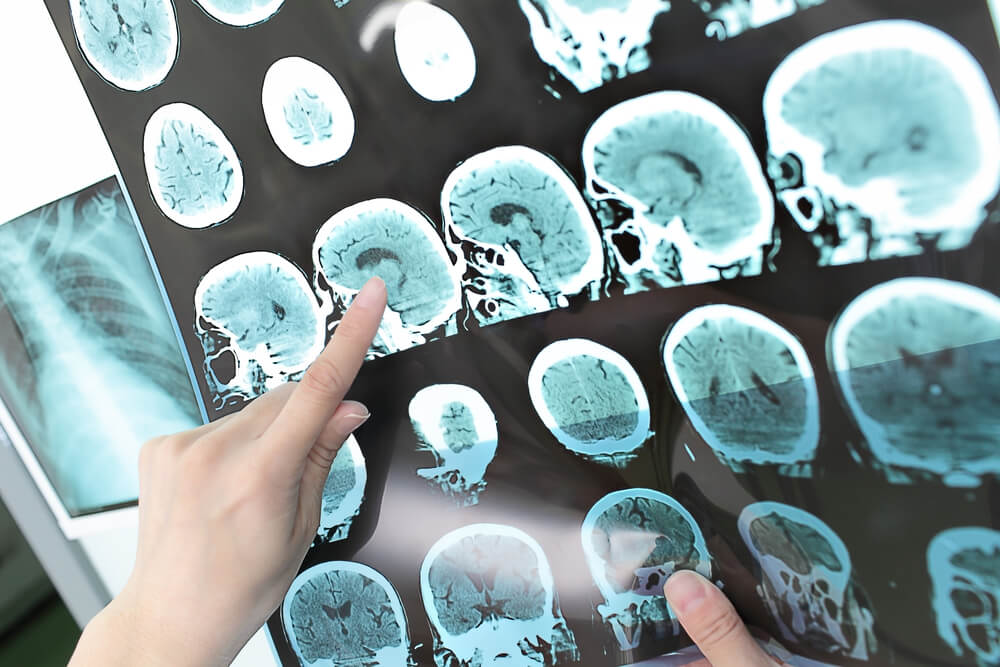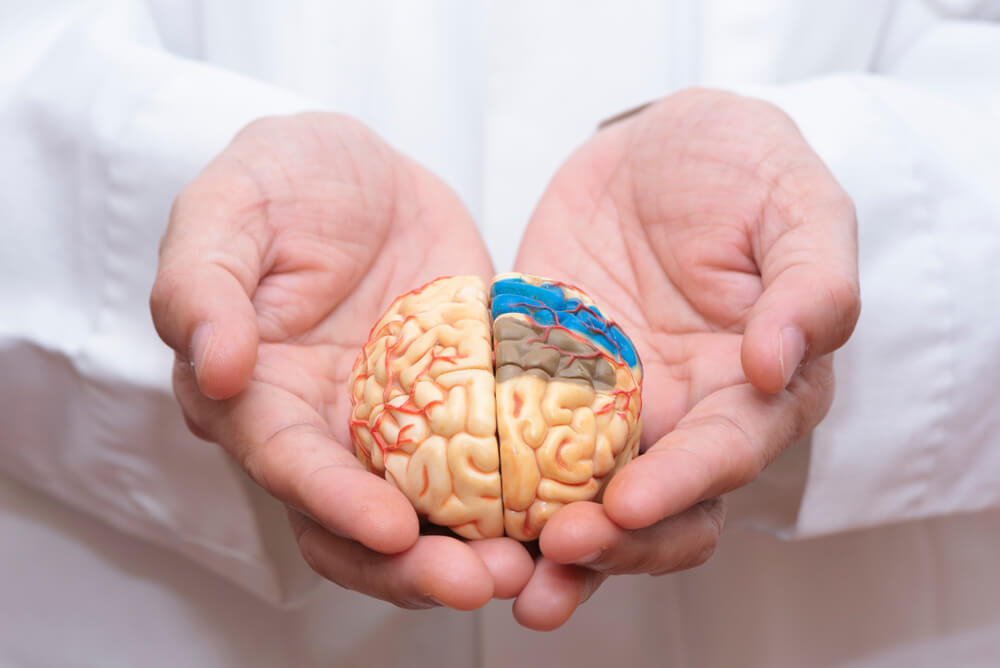We have established a unique Stroke Center in Belgrade to provide patients with prompt assistance in diagnosing stroke and treating its aftermath. A stroke doesn’t have to be fatal, and individuals can have a second chance at life after it. This fact is not aligned with the number of deaths each year, and the main reasons for this discrepancy are the lack of timely recognition of symptoms and unfamiliarity with the nature of the disease.
Therefore, in addition to diagnosis and treatment, we have set additional important goals: education about this issue and prevention, as these two aspects are interconnected. It is crucial to have as much knowledge as possible about such widespread and dangerous health problems so that we can react promptly and save our own lives or the lives of those around us when needed. We will strive to provide you with a better understanding of the nature of the problem, how to recognize early symptoms, and the appropriate response.
What is a stroke?

A stroke, or cerebrovascular accident, does not happen suddenly, although it may seem that way to many people. There is an underlying problem behind it, which often goes unnoticed for years as it develops silently, or the symptoms of the disease are not recognized and attributed to something else. It is not uncommon for a person to realize they are ill only after experiencing a stroke, as it can be the first obvious sign that something is wrong.
A stroke occurs when there is a reduced or interrupted flow of oxygen-rich blood to the brain, due to blockage of the carotid arteries, other blood vessels in the brain, or the rupture of a blood vessel in the brain – cerebral aneurysm. The carotid arteries carry blood from the heart to the brain. Depending on where the blockage occurs and, of course, the timing of receiving medical assistance, the consequences can be milder or more severe. The part of the brain that is deprived of necessary blood at that moment becomes damaged and dies.
Types of Stroke
There are two types of stroke based on how it can occur:
- Ischemic stroke: This is the more common type, accounting for about 85% of stroke cases that occur in a year. It occurs due to the blockage of blood vessels that supply the brain with blood. The blockage can be caused by the formation of a blood clot or blood coagulation. Ischemic stroke is further classified into two subtypes: thrombotic and embolic. Ischemic stroke can be prevented by leading a healthy lifestyle, maintaining a balanced diet, avoiding habits such as alcohol and tobacco, and engaging in regular light physical activities. Additionally, regular check-ups and preventive screenings can provide an accurate assessment of whether we are on the right track to avoid this event.
- Hemorrhagic stroke: This type of stroke is less common and occurs due to bleeding in the brain. When a blood vessel in the brain ruptures, it leads to bleeding and damage. The rupture is often caused by high blood pressure or the presence of an aneurysm. An aneurysm refers to a weakened or thinned part of a blood vessel, and unfortunately, patients are unaware of this problem until it ruptures.
It is also important to mention transient ischemic attack (TIA), also known as a mini-stroke, which indicates that a major stroke may occur soon.
The symptoms of a mini-stroke are similar to those of a major stroke. In this situation, the blockage that occurs is brief and quickly resolves, preventing brain damage. However, this does not mean that the patient is safe or should ignore the symptoms. Even when the symptoms of a mini-stroke quickly disappear, it is important to seek immediate medical attention to assess the condition and prevent a full-blown stroke.
How to quickly determine if it is a stroke?
There is a rapid test called the FAST test (Face, Arms, Speech, Time) that can be used effectively to recognize a stroke:
- Face: In the case of a stroke, the person’s face may be distorted or drooping on one side, and they may not be able to smile.
- Arms: Due to weakened motor abilities, the patient may not be able to raise both arms.
- Speech: The person may have difficulty speaking clearly or may not understand questions.
- Time: The time at which the patient receives care is crucial and can significantly impact the outcome. The sooner they receive help, the greater the chances of recovery.
If any of these symptoms are present, it is important to act quickly and seek immediate medical attention as it could be a sign of a stroke. Remember, time is of the essence when it comes to stroke, and prompt medical intervention can make a significant difference in the patient’s outcome.
First symptoms of a stroke
In the majority of cases, the initial symptoms of a stroke include:
- Headache or pain in the back of the head
- Dizziness or vertigo
- Altered level of consciousness
- Nausea
- Vision problems, such as double vision
Symptoms of a stroke
The symptoms of a stroke can vary and may differ between men and women. Often, multiple symptoms occur suddenly, but not everyone may experience all of them. Some common symptoms include:
- Problems with movement, balance, and coordination
- Numbness or weakness of the face or a specific part of the body, typically on one side, which occurs suddenly
- Sudden difficulties with speech, understanding speech, or confusion
- Vision problems that may affect one or both eyes
- Dizziness
- Severe headache that occurs suddenly
Some symptoms are particularly characteristic for women:
- Sudden pain in the face, arms, or legs
- Nausea
- Hiccups
- General weakness
- Heart palpitations
- Chest pain
- Shortness of breath
When should we contact the doctor if we suspect on stroke?
If you suspect a stroke in yourself or someone around you, it is important to know that there is no time to waste. The sooner the patient receives help, the greater the chances of effective assistance.
Today, diagnostic procedures and treatment methods for strokes are well-known and tested, and it is indeed possible to help the majority of patients if they seek medical attention in a timely manner.
According to research, it is possible to prevent a fatal outcome in up to 85% of stroke cases if medical assistance is sought urgently.
The first few hours, specifically within the first 4 hours, are a critical and crucial period in which a person must receive help in order to have a favorable outcome after a stroke.
Treatment after a stroke
Treatment after a stroke involves therapy, monitoring, and often the involvement of a physiatrist if the patient has significant physical consequences. Starting rehabilitation as early as possible is crucial for better outcomes. Treatment, recovery, and the restoration of functions depend on which part of the brain is affected, the extent of damage, the lost functions, as well as the patient’s overall health, age, and any accompanying conditions.
How to prevent a stroke
Prevention is key in combating this problem. By adopting healthy habits in our daily lives, we can make the most significant impact. This includes maintaining a healthy and balanced diet, maintaining an ideal body weight, engaging in physical activity, avoiding smoking, alcohol, and other harmful substances.

Actually, prevention is not so difficult or impossible; it is much harder to deal with the consequences of a stroke.
There are factors that can contribute to a stroke, such as genetic predisposition and age, over which we have little control. However, regular preventive check-ups can help monitor our health and enable us to take timely action before a problem arises. Annual check-ups and monitoring of blood parameters, triglycerides, cholesterol, and blood sugar levels should be part of our routine to detect any changes that may put us at risk.
At the Pulse Cardiology Center, we offer specially designed service packages that include important diagnostic examinations, including a package for investigating the etiology of stroke. We provide comprehensive services ranging from diagnostic tests to treatment and interventions, all in one place.
We offer the fastest and highest quality service in this part of Europe. Schedule an appointment with us and take care of your health!




